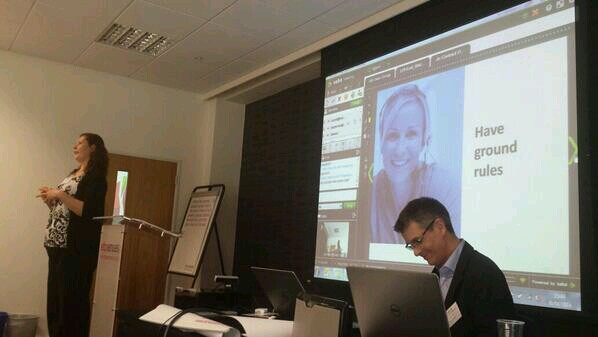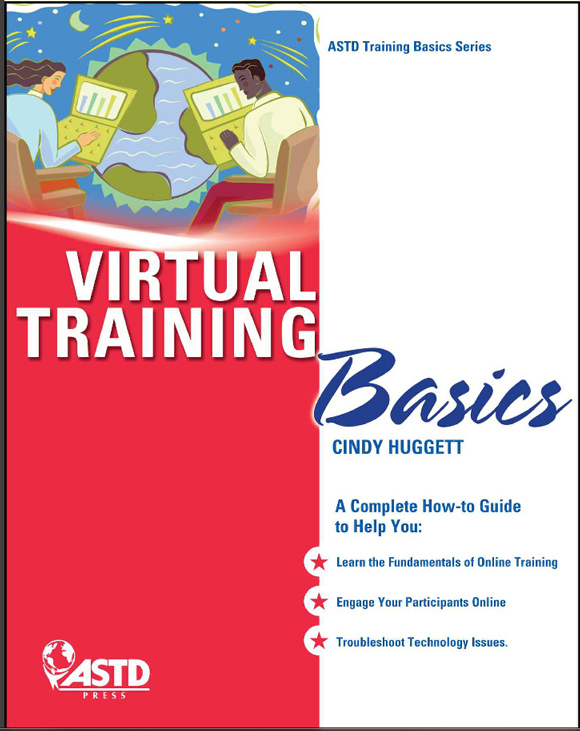In a previous blog post I started what I hope to be a discussion with you about instruction and facilitation in Learning and Development. In this post I want to start unpicking what facilitation means more broadly and what it means in a training arena and for online delivery.

“Group facilitation”, writes Roger Schwarz, “is a process in which a person whose selection is acceptable to all members of the group, who is substantively neutral, and who has no substantive decision-making authority diagnoses and intervenes to help a group improve how it identifies and solves problems and makes decisions, to increase the group’s defectiveness”.
This explanation is broad, but at the same time focused on a person helping a group with some kind of problem or issue. The emphasis here is on the group doing the discussion, the work and coming to consensus. The facilitator is there to help smooth the process.
Change of approach
Distilling this facilitator role into L&D brings a more collaborative approach to learning and steps away from the instructor or lecture model, often characterised as a boring, stuffy person talking at snoozing attendees.
The trouble is, that to be a facilitator “the person should be able to accept the value of facilitated learning as equal to the traditional model”, states the Illinois Online Network. In my discussions and observations, it’s this that is the sticking point and where we might centre more of our discussion.
Use of technology in learning
Even in 1995, when technology power and enough bandwidth was an issue, Zane L. Berge, Ph.D. stated the following in their report The Role of the Online Instructor/Facilitator: “I want to emphasize in the strongest way that when developing and delivering instruction, whether online or not, the use of technology is secondary to well-designed learning goals and objectives. What distinguishes online instruction from entertainment or recreation is the purposefulness of the designers and developers in provoking certain intelligent responses to the learning materials, context, and environment.”
 Cindy Huggett wrote that facilitation is “asking questions to provoke discussion; drawing people into conversation; …enabling participants to apply the learning”.
Cindy Huggett wrote that facilitation is “asking questions to provoke discussion; drawing people into conversation; …enabling participants to apply the learning”.
Cindy also explains of the facilitative approach that we need to “encourage participants to share their own stories. Allow time for them to hear their fellow participants’ experiences. Help participants see how the training topic can be immediately applied and how it’s relevant to them”.
All of this works just as well for face to face as the online classroom.
Facilitation in the virtual classroom
In the live online classroom, facilitated questions need to be more specific for two reasons:
1) Participants need to know how to respond – with annotation tools on a slide; on a whiteboard; in a chat window; in a private (or paired) chat; on a poll; with an emoticon; with a hand up icon; over the microphone; in a breakout room; write their own notes; to think about for another activity… and so on.
2) The facilitator can’t see if they have confused participants. Though usually they tell you, by then you have lost perhaps a little of their faith or engagement. Maybe the shine has gone from your professionalism. You’ve certainly lost time and someone may have answered via a method you hadn’t planned. This is amusing at best, and at worst, embarrassing for the participant, yourself and disrupts the flow for the whole cohort.
The Illinois Online Network explains that for an online facilitator “being sensitive, open and flexible is not an option, it is a requirement.” Berge’s report also states that we need to be “creating a friendly, social environment in which learning is promoted is also essential”.
This is certainly what drives me both my face to face and online. Its probably your methodology too. What about some of our colleagues though – do they behave the same? What barriers are there? How do we overcome them? How have we overcome them?
References:
- The Skilled Facilitator, A Comprehensive Rouses for Consultants, Facilitators, Managers, Trainers and Coaches, Schwarz, R., 2002, Jossey-Bass
- Virtual Training Basics, Huggett, C. 2010, ASTD Press


Good post Jo.
I find that online facilitation brings with it challenges that are different from the classroom environment. There could be technical difficulties, instructions to learners need to be clear, there can also be less connectedness as the learners could be in different locations (or even accessing at different times) plus the points you raised above. An online facilitator has more to do in terms of creating a learning environment and a big part of that is making the learners feel comfortable in the online space.